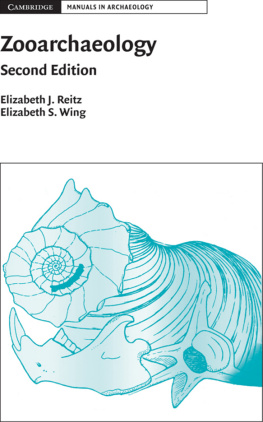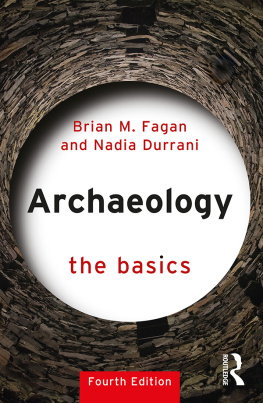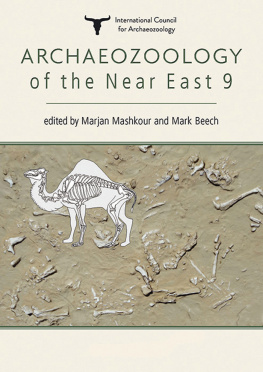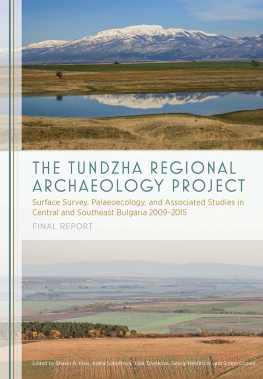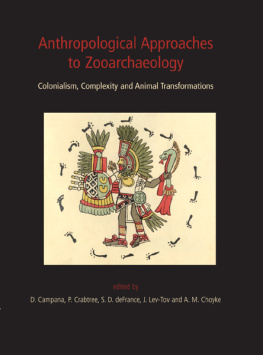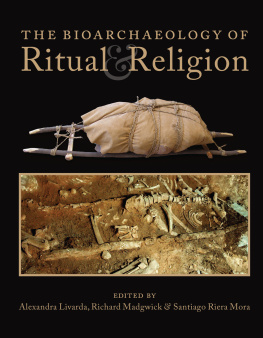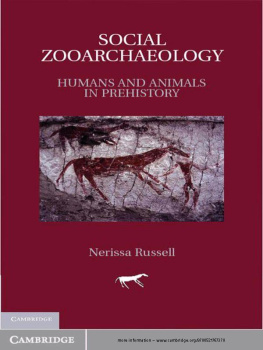Zooarchaeology, Second Edition
This book serves as an introductory text for students interested in the identification and the analysis of animal remains from archaeological sites. The emphasis is on animals whose remains inform us about the relationship between humans and their natural and social environments, especially site-formation processes, subsistence strategies, the processes of domestication, and paleoenvironments. Examining studies from all over the world, from the Pleistocene period up to the present, this volume is organized in a way that is parallel to a faunal study, beginning with background information, bias in a faunal assemblage, and basic zooarchaeological methods. A zooarchaeological Hypothetical Collection illustrates the fundamental methods for the collection of primary and secondary data that are applicable to zooarchaeology practice.
This revised edition reflects developments in zooarchaeology that have occurred during the past decade. It includes new sections on enamel ultrastructure and incremental analysis, stable isotopes and trace elements, ancient genetics and enzymes, environmental reconstruction, people as agents of environmental change, applications of zooarchaeology in animal conversation and heritage management, and a discussion of issues pertaining to the curation of zooarchaeological materials.
ELIZABETH J. REITZ is Professor of Anthropology at the Georgia Museum of Natural History, University of Georgia. Her work is based on the identification and interpretation of animal remains from coastal archaeological sites, particularly in South America, the Caribbean, and the southeastern United States. She is the co-author and co-editor of several volumes, as well as the author of more than 150 articles and book chapters.
ELIZABETH S. WING is Curator Emeritus at the Florida Museum of Natural History, University of Florida. The co-author of two books and author of many scholarly articles, she received the Fryxell Award from the Society for American Archaeology in 1996 for distinguished contributions to archaeology through interdisciplinary research. In 2006, Dr. Wing was elected to the National Academy of Sciences and received the Presidents Medal from the University of Florida.
Cambridge Manuals in Archaeology
General Editor
Graeme Barker, University of Cambridge
Advisory Editors
Elizabeth Slater, University of Liverpool
Peter Bogucki, Princeton University
Cambridge Manuals in Archaeology is a series of reference handbooks designed for an international audience of upper-level undergraduate and graduate students, and professional archaeologists and archaeological scientists in universities, museums, research laboratories, and field units. Each book includes a survey of current archaeological practice alongside essential reference material on contemporary techniques and methodology.
Books in the series
Clive Orton, Paul Tyers, and Alian Vince, POTTERY IN ARCHAEOLOGY
R. Lee Lyman, VERTEBRATE TAPHONOMY
Peter G. Dorrell, PHOTOGRAPHY IN ARCHAEOLOGY AND CONSERVATION, 2ND EDITION
A. G. Brown, ALLUVIAL GEOARCHAEOLOGY
Cheryl Claasen, SHELLS
Clive Orton, SAMPLING IN ARCHAEOLOGY
Steve Roskams, EXCAVATION
Simon Hillson, TEETH, 2ND EDITION
William Andrefsky, Jr., LITHICS, 2ND EDITION
James Conolly and Mark Lake, GEOGRAPHICAL INFORMATION SYSTEMS IN ARCHAEOLOGY
Andrew Chamberlain, DEMOGRAPHY IN ARCHAEOLOGY
A. M. Pollard, C. M. Batt, B. Stern, and S. M. M. Young, ANALYTICAL CHEMISTRY IN ARCHAEOLOGY
Zooarchaeology
SECOND EDITION
Elizabeth J. Reitz University of Georgia
Elizabeth S. Wing Florida Museum of Natural History

CAMBRIDGE UNIVERSITY PRESS
Cambridge, New York, Melbourne, Madrid, Cape Town, Singapore, So Paulo, Delhi, Tokyo, Mexico City
Cambridge University Press
The Edinburgh Building, Cambridge CB2 8RU, UK
Published in the United States of America by Cambridge University Press, New York
www.cambridge.org
Information on this title: www.cambridge.org/9780521857260
Elizabeth J. Reitz and Elizabeth S.Wing 2008
This publication is in copyright. Subject to statutory exception and to the provisions of relevant collective licensing agreements, no reproduction of any part may take place without the written permission of Cambridge University Press.
First published 2008
Reprinted 2010 (twice)
A catalogue record for this publication is available from the British Library
Library of Congress Cataloging in Publication Data
Reitz, Elizabeth Jean, 1946
Zooarchaeology / Elizabeth J. Reitz, Elizabeth S.Wing. 2nd ed.
p. cm. (Cambridge manuals in archaeology)
Includes bibliographical references and index.
ISBN 978-0-521-85726-0 (hardback) ISBN 978-0-521-67393-8 (pbk.)
1. Animal remains (Archaeology) Identification Handbooks, manuals, etc.
I. Wing, Elizabeth S. II. Title. III. Series.
CC79.5.A5R45 2007
930.1dc22 2007019451
ISBN 978-0-521-85726-0 Hardback
ISBN 978-0-521-67393-8 Paperback
Cambridge University Press has no responsibility for the persistence or accuracy of URLs for external or third-party internet websites referred to in this publication, and does not guarantee that any content on such websites is, or will remain, accurate or appropriate. Information regarding prices, travel timetables, and other factual information given in this work is correct at the time of first printing but Cambridge University Press does not guarantee the accuracy of such information thereafter.
Dedicated to our families and colleagues in appreciation of their support and inspiration.
CONTENTS

LIST OF FIGURES

.
LIST OF TABLES

PREFACE TO THE SECOND EDITION

When we were asked to prepare a second edition to Zooarchaeology, we anticipated that this would be relatively easy. We proposed to update the literature and work on sections that we or our colleagues found did not work in practice. We quickly realized, however, the truth of the statement that zooarchaeology is a dynamic field. We were surprised to find a few major changes in the traditional approaches in the field over the past 10 years and significant advances in archaeogenetic, isotopic, and incremental growth applications. A shift in research emphasis also has occurred. Whereas in 1999 many zooarchaeologists focused on biological and anthropological interpretations pertaining to economies and the history of animal domestication, today publications on environmental change, environmental reconstruction, and applied zooarchaeology constitute a large percentage of the literature. Advances in geochemical applications make it possible to develop holistic perspectives on the humanenvironment relationship, dissolving problematic distinctions among anthropology, archaeology, ecology, geology, human biology, and zoology. At the same time, after many years of functional interpretations, structural explanations have assumed a larger place in the literature. One of the most gratifying discoveries is the increase in important zooarchaeological studies published in peer-reviewed, international journals by scholars from beyond Europe and North America. This more broadly inclusive community of scholars is a good sign that zooarchaeology continues to be strongly international.
Next page
